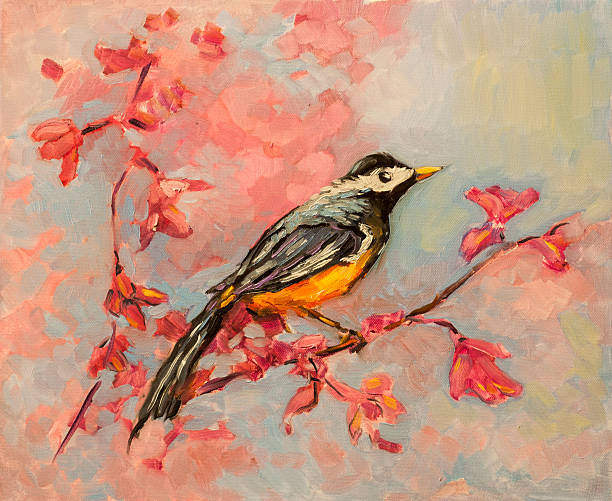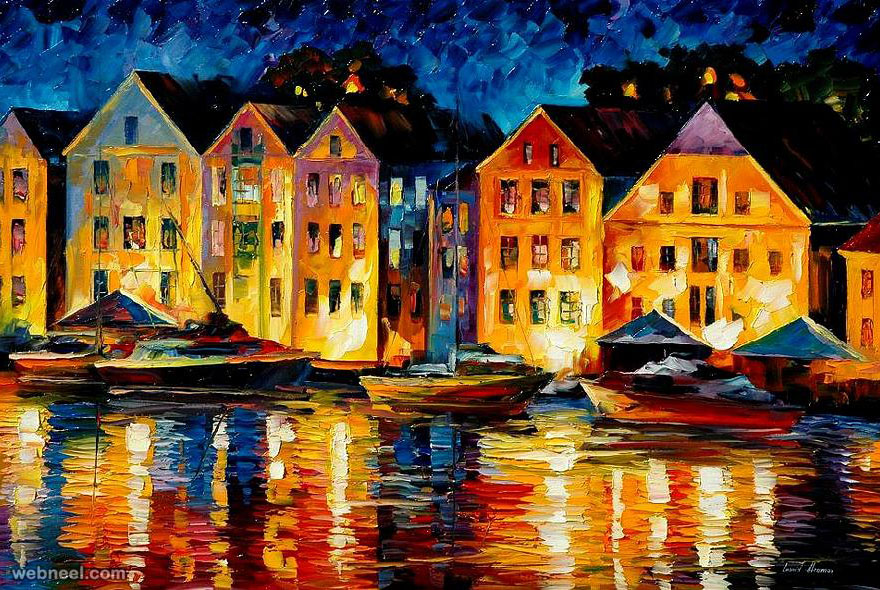Oil Paintings for Sale to Transform Any Living Area
Oil Paintings for Sale to Transform Any Living Area
Blog Article
Checking out All About Oil Paints: An Overview to Recognizing Their Elegance and Worth
Oil paints have captivated target markets for centuries, supplying a glimpse right into the artistic mastery of various ages. Their rich background is linked with ingenious techniques and extensive psychological expression. Comprehending the materials and methods behind these art work can improve gratitude. Additionally, the market for oil paintings offers chances for enthusiasts and investors alike. As one explores this remarkable globe, the inquiry develops: what makes an oil painting absolutely useful?
The History of Oil Paint: A Journey Through Time
Although oil paint has roots that date back to ancient times, it really prospered throughout the Renaissance, when artists discovered its flexibility and abundant color possibility. Early examples can be traced to the 7th century, with strategies progressing notably throughout societies. The medium came to be noticeable in Northern Europe in the 15th century, especially via the jobs of artists like Jan van Eyck, that originated its use for thorough realistic look and lively hues. This period noted a separation from tempera paints, permitting greater depth and texture. As oil paint spread, it influenced countless musicians, leading to work of arts by prominent figures such as Leonardo da Vinci and Rembrandt. The medium's tradition proceeds, shaping the art world well into contemporary times.
Recognizing Oil Repaints: Materials and Techniques
As musicians discover the globe of oil paints, they experience a diverse variety of products and strategies that specify this tool. The key components of oil paint include pigments, which offer shade, and drying out oils, such as linseed, that bind the pigments and facilitate application. Numerous additives can change the paint's texture and drying out time, boosting flexibility. Methods like glazing, where transparent layers are constructed up, and impasto, which entails using thick paint, enable various aesthetic results. In addition, the usage of brushes, scheme knives, and even fingers can develop distinct structures and surfaces. Comprehending these materials and methods allows artists to completely reveal their creative thinking and achieve the wanted influence in their artwork.
The Function of Color in Oil Paintings
Shade plays a critical role in oil paints, affecting both visual appeal and psychological resonance. Comprehending color concept essentials, including the relationships in between shades, can improve an artist's ability to communicate mood and atmosphere. In addition, grasping color blending techniques enables greater depth and splendor in a painting's combination.

Color Theory Essential
Recognizing shade concept is vital for artists collaborating with oil paints, as it creates the foundation for creating unified and visually interesting compositions. Shade theory includes the study of exactly how colors connect, the color wheel, and the relationships in between primary, second, and tertiary colors. Musicians utilize corresponding colors to boost contrasts and create centerpieces, while similar shades advertise unity and cohesiveness within a piece. Additionally, the ideas of warm and trendy colors affect the assumption of depth and room in a painting. Understanding these concepts enables artists to adjust color effectively, leading the customer's eye and communicating their desired message. Proficiency of color concept ultimately improves an artist's capability to share emotions and ideas via their work.
Psychological Influence of Color
The psychological influence of color in oil paints plays an important duty in how customers perceive and link with art work. Colors evoke certain sensations and moods, affecting the audience's psychological state. Warm colors like oranges and reds can develop a feeling of heat and power, while awesome tones such as blues and eco-friendlies typically stimulate peace or self-contemplation. Artists strategically choose color palettes to enhance narrative elements, directing the audience's emotional journey. The saturation and comparison of shades additionally intensify these results, drawing attention and creating focus. Inevitably, the interaction of shades in oil paintings not only improves their aesthetic appeal but also acts as a powerful tool for psychological expression, enhancing the audience's experience and interpretation.
Color Combining Techniques
While numerous elements of oil paint add to the general structure, understanding shade blending strategies is important for achieving desired results and depth. Color blending can be come close to with various approaches, consisting of the subtractive and additive processes. Additive blending entails integrating colors of light, while subtractive blending relies upon pigments, where colors blend to create brand-new tones. Musicians usually use a limited scheme to produce harmonious jobs, recognizing the relationships in between main, secondary, and tertiary shades. Methods such as glazing and scumbling further boost depth and luminance. By skillfully blending colors, a musician can stimulate feelings, produce focal points, and attain a sense of realistic look, eventually boosting the painting's psychological and aesthetic influence.
Famous Oil Painters and Their Iconic Works

Famous for their proficiency of color and strategy, oil painters have produced several of the most well known artworks in history. Distinguished musicians like Vincent van Gogh mesmerized target markets with his stirring brushwork in "Starry Evening," while Claude Monet's "Perception, Sunup" laid the foundation for Impressionism. Leonardo da Vinci's "Mona Lisa" remains an enduring symbol of artistic brilliant, showcasing his ability in capturing human expression. On the other hand, Rembrandt's "The Evening Watch" illustrates his ingenious usage of light and darkness. Various other notable figures include Pablo Picasso, that reinvented contemporary art with his strong testing in jobs like "Les Demoiselles d'Avignon," and Georgia O'Keeffe, whose dynamic representations of blossoms and landscapes aided define American modernism. Each artist's unique design added greatly to the oil paint landscape.
Just how to Review the High Quality of an Oil Painting
Reviewing the top quality of an oil painting involves a mindful analysis of craftsmanship techniques, along with an analysis of color and composition. Observing brushwork, layering, and the application of paint can disclose the musician's ability level. Furthermore, the interplay of colors and the overall arrangement of components add substantially to the paint's visual value.
Assessing Workmanship Methods
A precise assessment of workmanship techniques is important for determining the top quality of an oil painting. Critics should initially analyze the application of paint; thick, textured brushstrokes might recommend a skilled hand, while extremely uniform applications can indicate an absence of deepness. oil paintings for sale. The layering technique is additionally crucial; the presence of lusters and differed thickness can enhance luminosity and complexity. In addition, the top quality of the materials used, such as the canvas and pigments, plays a significant duty in longevity and total aesthetic. Attention to information in components like sides and changes in between shades reflects the musician's dedication to their craft. Inevitably, these strategies contribute to the paint's emotional influence and market price, functioning as indicators of the artist's skill and intent
Evaluating Shade and Make-up
While reviewing the top quality of an oil painting, one need to concentrate on the interplay of shade and make-up, as these aspects are fundamental to the art work's total impact. Color choices can establish and evoke feelings state of mind; for that reason, the artist's scheme should be examined for consistency and comparison. A healthy make-up routes the customer's eye and develops a feeling of unity. Artists typically utilize techniques like the guideline of thirds or leading lines to boost visual rate of interest. Additionally, using light and shadow can include deepness, boosting the three-dimensionality of the paint. Inevitably, an effective oil painting weds color and composition, engaging the visitor and welcoming a much deeper recognition of the artist's vision and method.
Taking care of and Preserving Oil Paintings
Correct treatment and preservation of oil paints is vital for preserving their honesty and durability. To safeguard these artworks, it is essential to display them away from direct sunshine, which can trigger fading and staining. Maintaining a secure setting with regulated temperature and humidity additional aids in avoiding damages. Cleaning up need to be done gently making use of a soft, dry fabric, preventing any type of harsh chemicals that could harm the paint or varnish. Regular assessments for indicators of degeneration, such as flaking or fracturing, are advisable. When transporting or keeping oil paints, correct extra padding and framing are required to avoid physical harm. Ultimately, persistent treatment adds to the aesthetic charm and value of oil paintings with time.
The Market for Oil Paintings: Investing and accumulating
Understanding the market dynamics for oil paintings is essential for capitalists and collection agencies alike. The worth of these artworks is affected by numerous aspects, including the musician's credibility, historic significance, and existing trends. Collectors commonly look for pieces that resonate directly while thinking about possible gratitude in value. Public auctions and galleries work as primary venues for trading, with rates rising and fall based on demand and rarity. Buying oil paints requires study into the market, along with an understanding of authenticity and provenance. Additionally, arising musicians may offer chances for substantial returns, while established names can regulate high rates. Overall, a calculated method to gathering can produce both aesthetic pleasure and monetary incentives.

Frequently Asked Inquiries
What Are the Ecological Impacts of Oil Paint Products?
The environmental impacts of oil paint materials consist of the release of unpredictable natural substances (VOCs), damaging waste generation, and resource removal for pigments. These elements contribute to pollution and eco-friendly destruction, increasing problems among environmentally conscious artists and consumers.
Exactly How Do Different Canvases Impact Oil Painting Results?
Different canvases affect oil painting results substantially. Structure, absorbency, and surface quality can modify paint application, drying times, and color vibrancy. Musicians often choose specific canvases to accomplish wanted results and improve their artistic expression.
Can Oil Paintings Be Restored if Damaged?
If damaged, Oil paints can without a doubt be restored. Professional conservators make use of numerous methods to fix rips, tidy surfaces, and address staining, making certain that the art work preserves its initial charm and worth for future generations.
What Are the Indicators of an Initial Oil Paint?
The signs of an original oil paint consist of visible brush strokes, appearance variants, and an irregular canvas weave (oil paintings for sale). Additionally, credibility might be verified with provenance, signatures, and the visibility of a varnish layer unique to oil tools
How Has Technology Influenced Modern Oil Paint Techniques?
Modern technology has actually greatly influenced contemporary oil paint techniques by introducing digital devices for preparation, improved products for texture and long life, and on-line platforms for marketing and sharing art, consequently broadening musicians' imaginative opportunities and audience reach. Oil painting has origins that date back to ancient times, it truly grew throughout the Renaissance, when musicians discovered its versatility and abundant shade capacity. The psychological impact of shade in oil paintings plays a vital duty in exactly how viewers regard and attach with artwork. While several facets of oil painting add to the general make-up, grasping color mixing strategies is crucial for attaining desired results and depth. Reviewing the top quality of an oil paint involves a cautious assessment of workmanship techniques, as well as an evaluation of color and structure. While evaluating the high quality of an oil painting, one should focus on the interplay of color and structure, more info as these elements are essential to the artwork's overall impact.
Report this page